
Jupiterimages/Photos.com/Getty Images
Several kinds of animals are used with which to make fur coats. The most popular animals used are foxes and mink--both the farmed and wild types. Other farmed animals used for fur coats include chinchillas, fitches, finnraccoons (raccoon dogs) and nutrias. Animals caught in the wild and used for fur coats include beavers, raccoons, muskrats, coyotes, lynx and fishers.
Fox
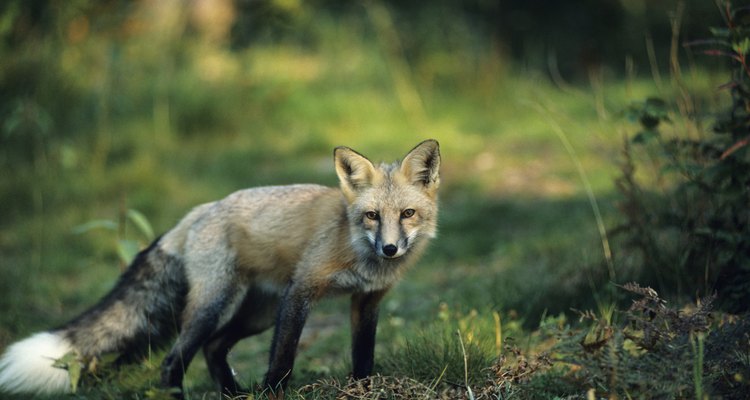
Tom Brakefield/Stockbyte/Getty Images
Depending on the type of fox used, a standard coat requires 11 to 18 foxes. Fox is by far the most popular animal used for fur coats because they come in many natural colors, are found all over the world and are easy to ranch. Additionally, fox fur wears well as long as it is cleaned regularly. Several types of foxes are used, such as the blue fox, which is ranched extensively in Scandanavia and whose colors range from blue brown to blue and white with blue tints. The red fox is the most common and the least expensive as it can be found in all continents but South America. The platina fox is a light platinum color and makes one of the most expensive fox fur coats.
White fox is the most expensive and is extremely thick. Considered the height of glamor, this fur sometimes needs to be bleached to keep it from turning yellow. The silver fox does not exist in the wild. It is blue-black with a white-tipped tail. The cross fox has a cruciform marking on its head and neck, thus the name. The rest of its body is basically red with the cross being a deeper red color. The gray fox comes from the Americas and is silver gray in color with some red tinting. Kitt foxes are also American and are gray in color.
Minks and Muskrats
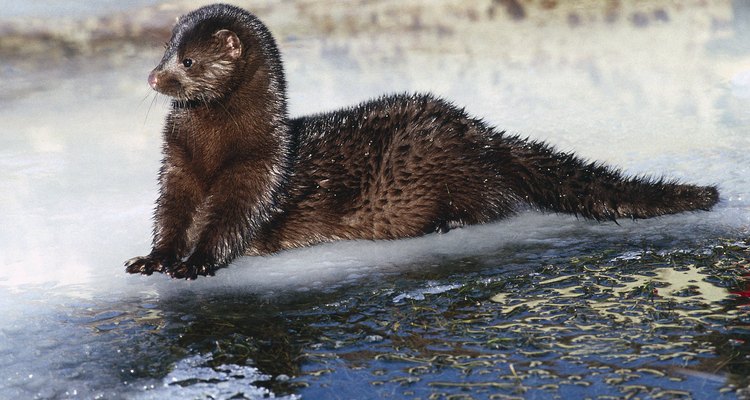
Hemera Technologies/Photos.com/Getty Images
About 35 ranched minks or 55 wild minks are needed to make one fur coat. Part of the weasel family, minks can be found in the wilds of North America. However, the ones used for coats are usually farmed or ranched. Minks have soft, light pelts that are very strong. As such, mink coats can last 20-plus years with proper care. Muskrat is very versatile and can be dyed to look like mink or sheared to look like beaver fur. About 30 of these animals are needed to make one fur coat. Muskrat wears very well with care, with the eastern (US) muskrat being the most durable. Its colors range from dark brown to golden brown to silver. The eastern muskrat is distinct in that it is almost black and is also the most expensive. They are found throughout the United States.
Chinchilla

Jupiterimages/Photos.com/Getty Images
On average, it takes at least 100 chinchillas to make a fur coat. Chinchillas were originally found in the Andes, but high demand had almost wiped out the animal and thus, they are now all ranched. Chinchillas have a very soft blue-gray fur with dark underfur. Although the fur is lightweight, it is very warm. Because it is a small rodent that has a very fragile skin, it is difficult to work with and a lot of chinchillas are required to make one piece. It is also more expensive.
Fitches and Fishers
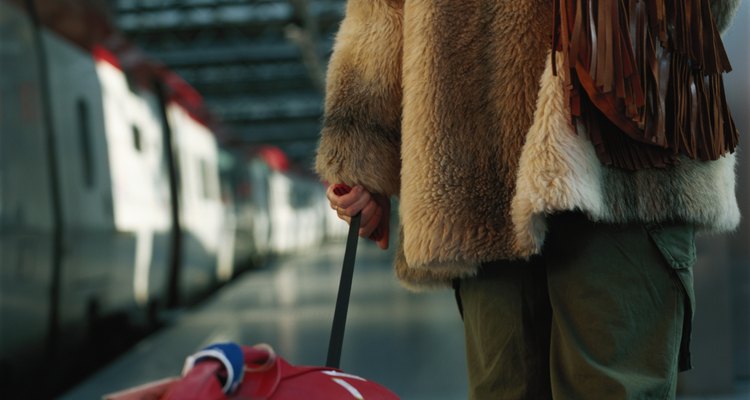
David De Lossy/Photodisc/Getty Images
Fitches come in several colors, from white, striped to yellow. They are found in Siberia, Germany, Austria, Poland and Mongolia. The white fitch is considered the best and is also the most expensive. Fitches are not as durable as mink but can last if given appropriate care. They are similar to sable, whose fur color goes from brown to black. The females have softer and silkier pelts than males, and the fishers from westerned United States and Canada are the most sought-after. This fur is very durable.
Raccoons and Finnraccoons (Raccoon Dogs)
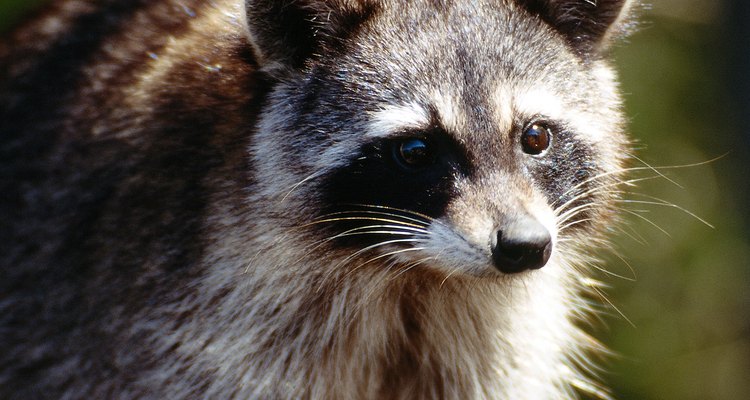
Jupiterimages/Photos.com/Getty Images
About 27 raccoons are required for one fur coat. These animals are indigenous to the United States and southern Canada. Whilst known for its ringed tail, its long and silvery body fur with black tips are sought-after by furriers. Raccoon coats, like beaver coats, come natural or sheared. Also like a beaver coat, the sheared coat requires special care to keep from matting. Still, raccoon coats are very durable and will last decades with proper care.
Finnraccoons, or raccoon dogs, can be found in Japan, Siberia, Manchuria, Vietnam and Korea. They are also called Asiatic raccoons. They have dense, soft furs with white faces and black across the eyes. Unlike a raccoon, however, the black mark goes down the shoulders and back, forming a cross. The rest of its body goes from dusky brown to yellow.
Beavers and Nutrias

Jupiterimages/Photos.com/Getty Images
It usually takes nine beavers to make one fur coat. The beaver has coarse, shiny fur that is soft and very thick. Beaver colors range greatly, from dark brown to pale brown sides to silvery. Beaver coats either come naturally or sheared. Natural beaver coats have a more rugged look and are very durable. Sheared beaver coats use fur that has been plucked or sheared. This type requires some care and yearly professional cleaning to prevent matting and damage. Additionally, the fur may mat if it gets wet.
A cousin of the beaver, the nutria's fur is soft and light. Furriers have also dyed the nutria's natural light brown fur color to black, brown or beige, among others, depending on style demands. Rich brown is considered the best natural fur color for a nutria. This animal's fur wears very well and is also very warm.
Lynx and Coyotes

NA/AbleStock.com/Getty Images
It takes at least 11 lynx to make one fur coat. These spotted, long-furred cats are native to Europe, Canada and the United States. The white lynx of Russia is the rarest and is protected by the Russian government. Still, the government allows a limited amount of white lynx pelts to be sold annually. Though long-haired, they do not shed and their fur is very soft.
Coyote fur was once thought of as useless until wolves were placed on the endangered species list. As an alternative, furriers turned to coyotes. Coyotes have long fur in pale gray or tan colors that is very durable and warm.
Related Articles
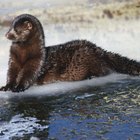
Colors of Mink Coats

How to Identify Sable Fur

How to Identify Types of Fur Coats
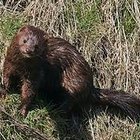
What Is Sheared Mink?
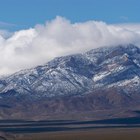
What Is White Buffalo Turquoise?

Why Is It Called a Pea Coat?
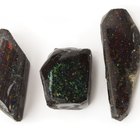
Which Types of Gems Are Most Expensive?

How to Clean Persian Lamb
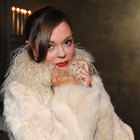
What Are Persian Lamb Coats?
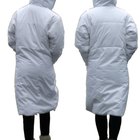
How to Shrink a North Face Coat
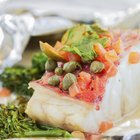
How to Cook Pink Snapper

Cubic Zirconia Vs. White Spinel
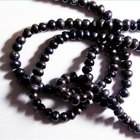
How Rare Is a Black Pearl?

Difference Between Red Rice & Brown Rice
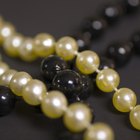
In What Parts of the World Are Valuable ...

Yellow Tail Tuna and Omega 3

Difference Between Manmade & Natural ...
How to Cook a Whole Rabbit in the Oven

How to Wash a Dirty White Coat
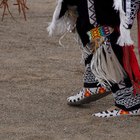
Hopi Indian Foods
References
Writer Bio
Jorina Fontelera has been writing about business since 2003, covering the printing and manufacturing sectors, as well as the global accounting and financial industries. She has contributed to "USA Today," "Milwaukee Business Journal" and several trade publications, also writing about parenting, animals, food and entertainment. Fontelera holds a Bachelor of Arts in English from Marquette University.
Photo Credits
Jupiterimages/Photos.com/Getty Images